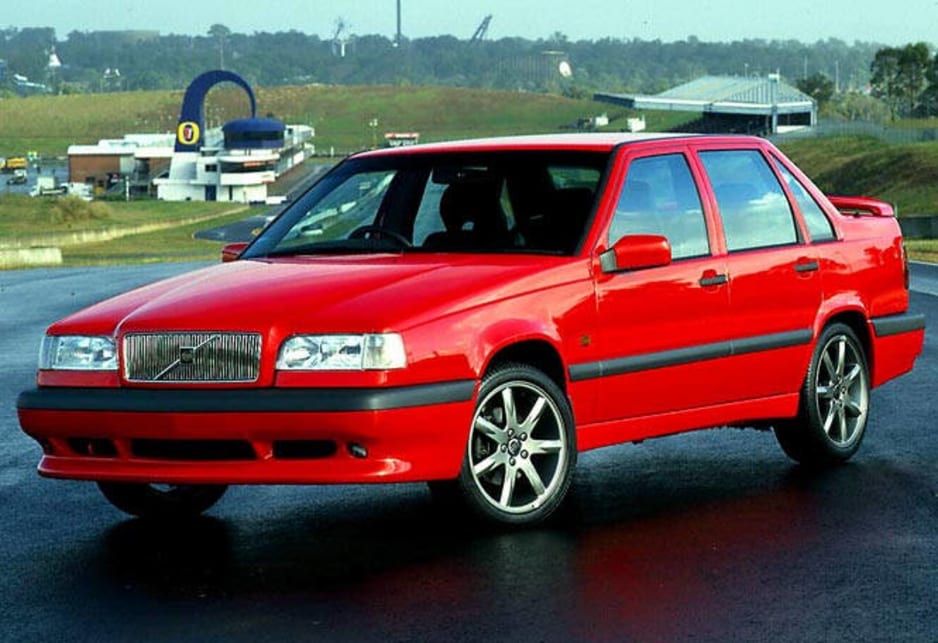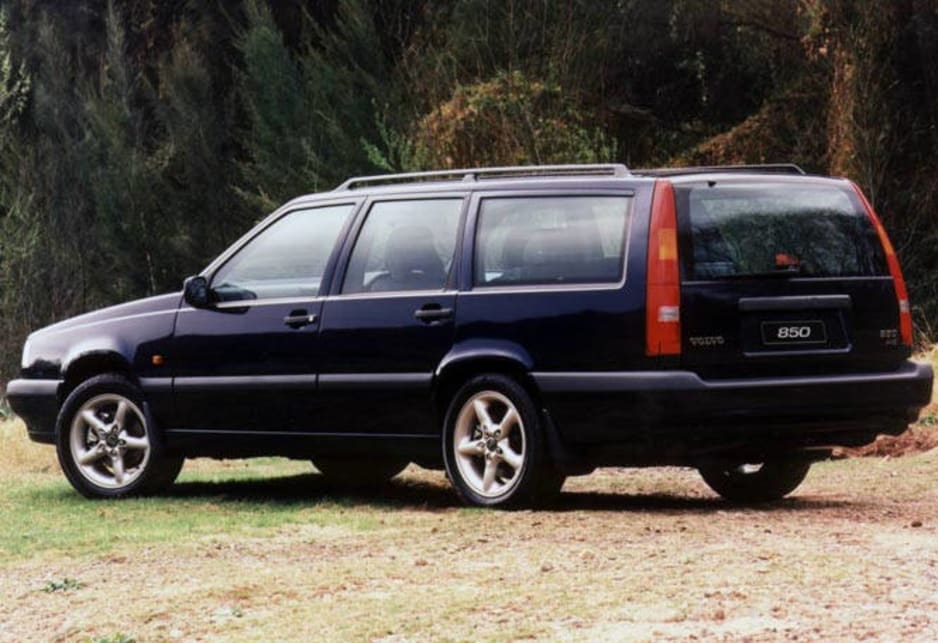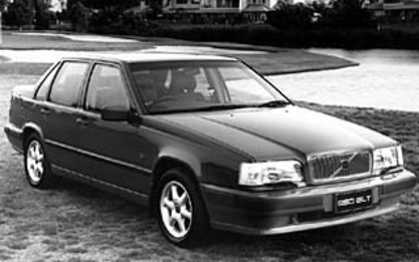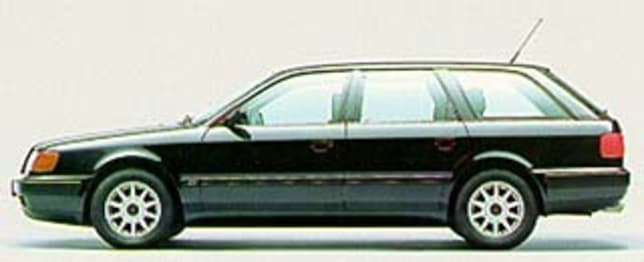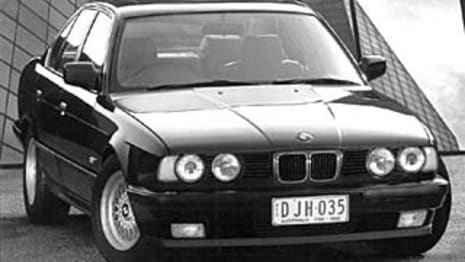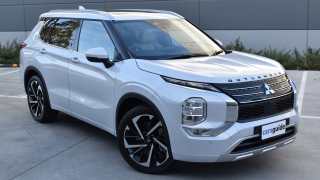
Used Volvo 850 review: 1992-1997
- Volvo 850
- Volvo 850 1992
- Volvo 850 1993
- Volvo 850 1994
- Volvo 850 1995
- Volvo 850 1996
- Volvo 850 1997
- Volvo 850 Reviews
- Volvo Reviews
- Volvo Sedan Range
- Sedan
- Volvo
- Used Car Reviews
- Prestige & Luxury Cars
- Buying tips
Regarded as the safe option Volvo shocked the car world when it launched the front-wheel drive 850 in 1992; it was the first front-wheel drive the company ever made. In developing the 850 Volvo threw out the rulebook by which it had developed its rear-wheel drive cars for most, if all of its long and illustrious history.
Volvo had always been a company that had gone about the business of making cars its own way, by creating and building safe, solid cars that were well built and reliable. The company’s strong focus on safety and the environment before it became trendy, while honorable, probably hurt Volvo more than it helped. In a case of reverse snobbery Volvo was looked down upon by the masses because it was the car of choice for the intellectual elite.
By the mid-1980s sales were in a slump and the company was in financial strife, reporting the first loss in its history in 1990. The safety message that had made Volvo stand out from the crowd was no longer getting through when the rest of the car industry had caught up. Volvo had to reinvent itself and the 850 was one of the first to emerge in the new age of the Swedish company.
MODEL WATCH
The 850 was an all-new Volvo mid-sized car launched in 1992. It was produced in sedan and wagon body styles. It came as something of a shock to the Volvo faithful to find that the company had abandoned its history of building rear-wheel drive cars and for the first time designed one that drove the front wheels.
Visually the 850 followed the styling theme Volvo had been using for some years, although the bold lines and boxy shapes had been softened slightly in line with the trend of the times. But compared to the jelly mould shapes that were coming from other carmakers, the Japanese in particular, the 850 was distinctive. It was unmistakably a Volvo.
The four-door 850 would accommodate four adults in comfort, and true to its roots it had plenty of headroom and legroom. There was also plenty of elbowroom provided you weren’t trying to squeeze three across the back seat.
Like its predecessors it had a low belt line that resulted in a large glass area, which gave the interior an airy feeling. Inside, it had plenty of fruit for the time. Air-conditioning was standard, the steering column could be adjusted, and there was a six-speaker sound system along with central locking. Leather trim became standard in 1994, while some models also got power windows and mirrors.
On top of that it had ABS anti-skid brakes as standard as well as power steering, and from 1993 it had a driver’s airbag.
The sedan’s boot was large and its low lip made loading easy. The wagon also had plenty of room for carrying things when the rear seats were folded.
If the switch to front-wheel drive caused some consternation among the Volvo faithful so too did the five-cylinder engine that was mounted across the engine bay east-west style. Volvo sliced one cylinder off an existing engine to create the 2.5-litre five-cylinder unit it used to power the 850.
There were two versions of the engine early on; the base engine had two valves per cylinder and produced 103 kW and 206 Nm, and there was a version with four valves per cylinder that produced 125 kW and 220 Nm. Later on there was a turbo variant that generated 166 kW and 300 Nm, and an even more powerful turbo engine that boasted 177 kW and 300 Nm. Transmission choices were a five-speed manual or a four-speed auto.
There was also plenty happening underneath the 850, particularly in the rear where the company’s engineers had employed a new ‘delta-link’ suspension, which went a long way to giving the 850 its sporty road feel.
On the road the 850 felt assured and stable with good road holding and a firm ride that belied its family four-door image. It went against the thinking of the time that front-wheel drive cars didn’t handle; those who took the time to drive it found it a pleasure on the open road with responsive and neutral handling and quite spirited performance.
IN THE SHOP
Generally the 850 is a sound car and little of real note seems to afflict them in service. Reports of problems are of a generally minor nature and nothing to be too concerned about. The automatic transmission can sometimes be difficult to shift out of park; this is caused by poor contact of the microswitch on the lockout.
Failure of the cruise control to engage is probably caused by damage to the plastic vacuum line in the vicinity of the left headlamp.
There have been reports of problems with the cam timing belt tensioner that results in a noise from the front of the engine. Oil leaks are sometimes observed from the oil pump mounting screws. Starting and drivability issues can be traced to a corroded connection where the negative battery cable connects to the engine.
IN A CRASH
Volvo has always prided itself on being a pioneer on safety so the 850 is full of features to protect us in a crash. Safety really starts with the body structure and Volvo was a leader in that field with the crash performance of its cars right up there with the best. Airbags were adopted quite early in the model cycle so look for cars sold from 1994 on. The 850 was also very capable on the road so its level of primary safety, with good road holding and features like ABS standard, is a match for its secondary safety package.
OWNERS SAY
Les Hotchin has had a great run out of his 1994 Volvo 850 T5 sedan since buying it second-hand in1999. It was a one owner and had traveled 84,000 km when he bought it, but it has now done 312,000 km. In that time the rear main seal was replaced at 220,000 km, a turbo was replaced at 289,000 km, and the starter motor was overhauled at 311,000 km. The radiator has been replaced, it has had 1.5 sets of brake rotors, plus pads as required, and two sets of shock absorbers. The oil has been changed every 5000 km and the specified service has been done every 10,000 km. It uses about 1.5 litres of oil between changes. The car is tight, comfortable, and rattle free. The leather front seats are showing their age, but are still quite supportive. It gets regular medium to long runs with at least one interstate trip per year, and on these drives will return about 8.5 L/100 km.
LOOK FOR
• timeless elegant styling
• modest performance from non-turbo models
• solid build quality
• robust engines and gearboxes
• roomy interior and boot
• good roadholding
• good fuel economy
THE BOTTOM LINE
Well-built, reliable, safe and sound car that would suit a young driver or family.
RATING
80/100
Pricing
| Year | Price From | Price To |
|---|---|---|
| 1997 | $3,190 | $10,010 |
| 1996 | $3,190 | $10,010 |
| 1995 | $3,190 | $9,900 |
| 1994 | $3,190 | $9,900 |
| 1993 | $4,180 | $9,130 |
| 1992 | $4,400 | $8,690 |
Pricing guides
Range and Specs
| Vehicle | Specs | Price* | |
|---|---|---|---|
| GLE | 2.4L, ULP, 4 SP AUTO | $4,400 – 6,490 | 1992 Volvo 850 1992 GLE Pricing and Specs |
| GLE/SE | 2.4L, ULP, 4 SP AUTO | $5,500 – 7,700 | 1992 Volvo 850 1992 GLE/SE Pricing and Specs |
| GLT | 2.4L, ULP, 4 SP AUTO | $6,160 – 8,690 | 1992 Volvo 850 1992 GLT Pricing and Specs |
Other cars to consider
$4,400
Lowest price, based on third party pricing data


